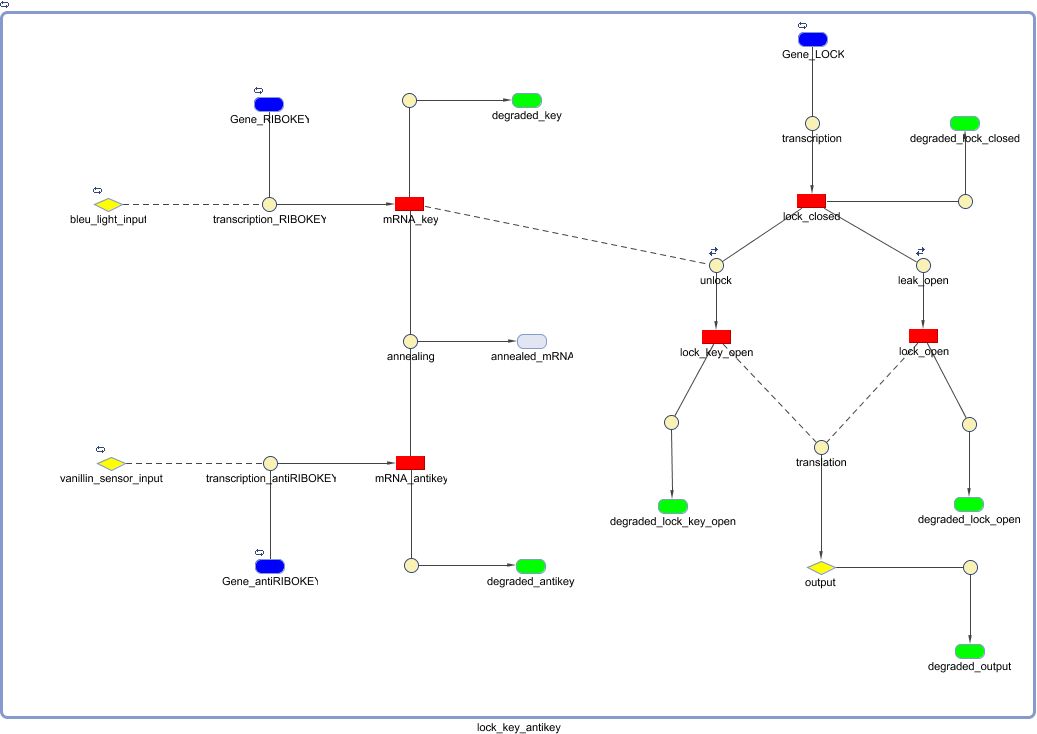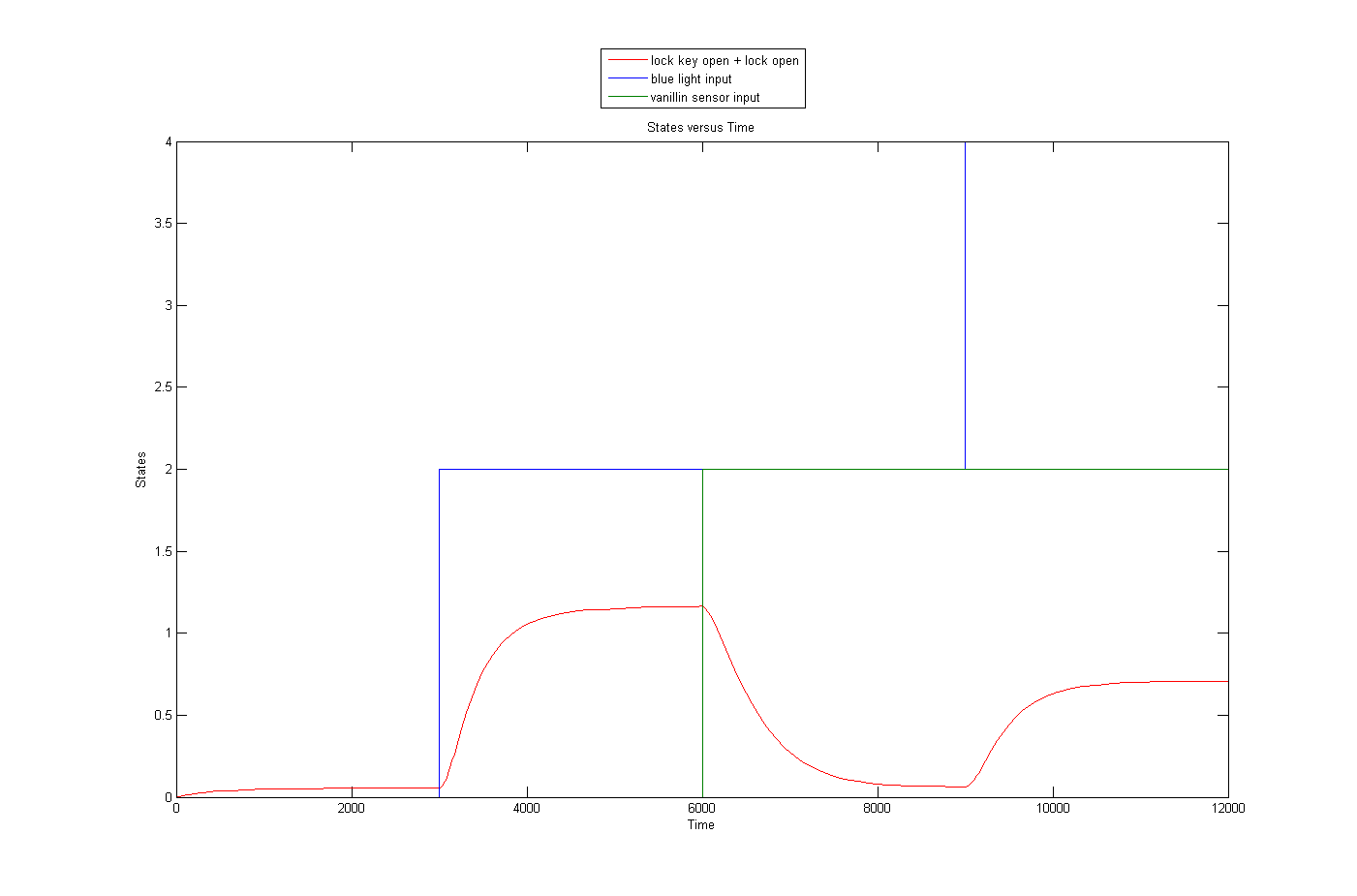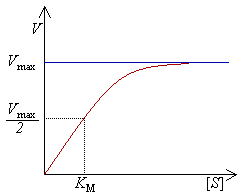Team:KULeuven/Modeling/Key Antikey
From 2009.igem.org
Key Lock Antikey: Modeling
Biological Model
Mathematical Model
| Name | Value | Comments | Reference |
|---|---|---|---|
| Degradation Rates | |||
| dmRNA | 2.3105E-3 s-1 | [1] | |
| Transcription Rates | |||
| ktranscription | 0.00848 s-1 | estimate | [2] |
| ktranslation | 0.167 s-1 | estimate | [2] |
| Key Lock Parameters | |||
| kunlock | 0.00237 s-1 | Rate of unlocking the RIBOLOCK through key | [3] |
| klock | 0.00416 s-1 | Rate of locking of unlocked RIBOLOCK-Key complex. | [3] |
| kopen | 7.5 s-1 | Rate of unlocking RIBOLOCK when no key is present (LEAK). | [3] |
| kclose | 500 s-1 | Rate of locking of leaked RIBOLOCK. | [3] |
| Annealing | |||
| Kannealing | infinity | Rate annealing is so high we consider it to be infinite. | [4] |
Simulation
The input/output behaviour of the key/lock system was investigated using simulations. In the following figures, time is measured in seconds and quantities in molecules.
In the figure below, the blue light input is represented in blue, the vanillin input in green and the amount of unlocked key in red.
Because of the nonlinear relationship between input and (anti)key (Michaelis-Menten), the steady state level of key depends on the level of both blue light sensor and vanillin sensor input and not just the difference between the two.
The most important conclusion is that for good functioning of the differentiator the transcription of both the key and the antikey are operated in the linear region (See figure Michaelis-Menten). It's therefore important that the inputs of this system remain in the same magnitude of the Km of the production of the (anti)key.
Also, the half life of the key and antikey have to be as short as possible, otherwise we subtract the integrated amounts of the signals and not the signals themselves. This should not pose any problem since the half life of non translational mRNA strands is merely 5 minutes, substantially faster than the system requires. This reasoning remains valid for all species in the cell, where the speed of the cell is limited by the slowest degrading species.
References
[1] J.A. Bernstein et al., “Global analysis of mRNA decay and abundance in Escherichia coli at single-gene resolution using two-color fluorescent DNA microarrays,” Proceedings of the National Academy of Sciences of the United States of America, vol. 99, Jul. 2002, pp. 9697–9702
[2] S.L. Gotta et al., “rRNA Transcription Rate in Escherichia Coli,” Journal of Bacteriology, vol. 173, Oct. 1991, pp. 6647-6649
[3] https://2008.igem.org/Team:KULeuven/Model/Filter
[4] V. Patzel et al., “Theoretical design of antisense RNA structures substantially improves annealing kinetics and efficacy in human cells,” Nature Biotechnology, 1998, pp. 64-68
 "
"










